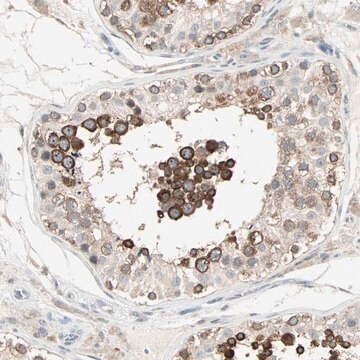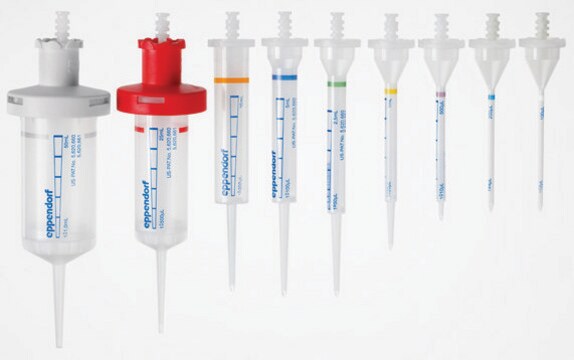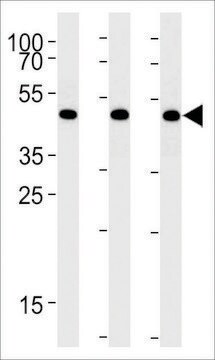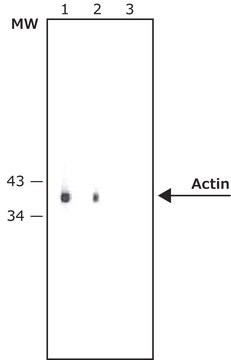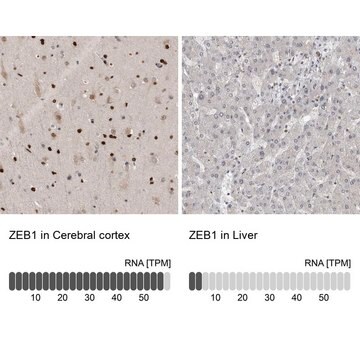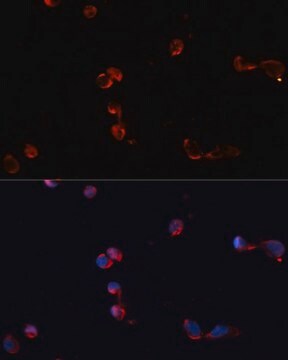MABN685
Anti-KDM4A Antibody, clone5H1
ascites fluid, clone 5H1, from mouse
Sinónimos:
Lysine-specific demethylase 4A, JmjC domain-containing histone demethylation protein 3A, Jumonji domain-containing protein 2A, KDM4A
About This Item
Productos recomendados
biological source
mouse
Quality Level
antibody form
ascites fluid
antibody product type
primary antibodies
clone
5H1, monoclonal
species reactivity
human
technique(s)
immunofluorescence: suitable
immunohistochemistry: suitable
western blot: suitable
isotype
IgG1
UniProt accession no.
shipped in
wet ice
target post-translational modification
unmodified
Gene Information
human ... KDM4A(9682)
General description
Immunogen
Application
Immunofluorescence Analysis: A 1:200-1,000 dilution from a representative lot detected KDM4A in NTERA-2 cells.
Optimal working dilutions must be determined by end user.
Quality
Western Blotting Analysis: A 1:500-2,000 dilution of this antibody detected KDM4A-hIgGFc transfected HEK293 cell lysates.
Target description
Analysis Note
HEK293 and KDM4A-hIgGFc transfected HEK293 cell lysates
¿No encuentra el producto adecuado?
Pruebe nuestro Herramienta de selección de productos.
Storage Class
12 - Non Combustible Liquids
wgk_germany
nwg
flash_point_f
Not applicable
flash_point_c
Not applicable
Certificados de análisis (COA)
Busque Certificados de análisis (COA) introduciendo el número de lote del producto. Los números de lote se encuentran en la etiqueta del producto después de las palabras «Lot» o «Batch»
¿Ya tiene este producto?
Encuentre la documentación para los productos que ha comprado recientemente en la Biblioteca de documentos.
Nuestro equipo de científicos tiene experiencia en todas las áreas de investigación: Ciencias de la vida, Ciencia de los materiales, Síntesis química, Cromatografía, Analítica y muchas otras.
Póngase en contacto con el Servicio técnico